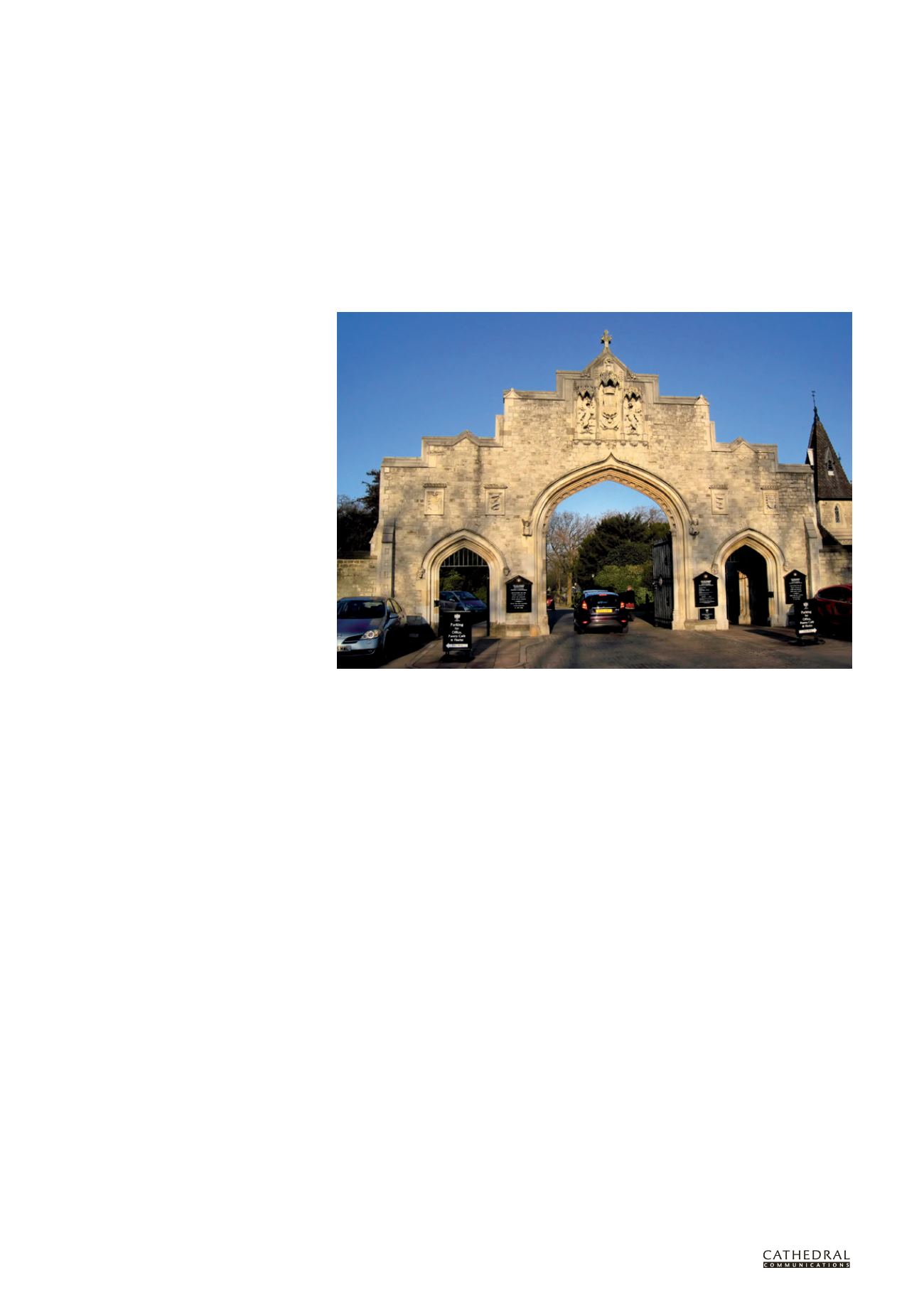

18
BCD SPECIAL REPORT ON
HISTORIC CHURCHES
24
TH ANNUAL EDITION
A NANOLIME CASE STUDY
The City of London Cemetery entrance screen
Ben Newman
O
NE OF the core principles of
conservation is to save and repair
as much surviving material as
possible. However, repairs often effect
a degree of change, posing ethical
issues as well as technical challenges
for the conservator, and few aspects of
conservation are quite as challenging as
consolidation. For example, where a fine
medieval timber boss has largely been
destroyed by woodworm, consolidating
its remains in resin raises questions about
originality and significance in much the
same way that its replacement with a new
timber carving would.
From a technical perspective, the
aim is to find a consolidant which
binds the original material together
effectively, but without harming it
or the rest of the structure. Where
the fabric to be consolidated is on
the exterior of a building, this can be
particularly challenging, and there is
much ongoing research into the ability
of a new lime-based material, nanolime,
to consolidate decayed limestone and
plaster. In particular, the EC-funded
Stonecore project carried out extensive
research into the use of the material
from 2008-11 and its findings were
disseminated across Europe through a
series of public meetings. More recently,
research carried out at the University
of Bath for Historic England has led to
the publication of guidance by Historic
England (see Further Information).
This article will explore nanolime’s
benefits and limitations through a case
study of the work that London Stone
Conservation undertook on the entrance
screen to The City of London Cemetery
in spring 2016.
WHAT IS NANOLIME?
Nanolime consists of artificially made,
nano-sized particles of calcium hydroxide
suspended in alcohol. There are two
commercially available brands: Calosil
was introduced to the market in 2006
followed by Nanorestore in 2008. The
alcohol can be ethanol, isopropanol or
n-propanol.
A nanometre (nm) is a unit of measure
equivalent to one millionth of a millimetre
and visible only under the most powerful
microscopes. Nanolime particles are
typically 150nm and since the average size
of stone pore structure is around 1,000nm
there is a very good potential to fill some of
this space, thereby consolidating decayed
stone and reducing further loss.
For the conservation of limestones
and other lime-based materials,
nanolime seems particularly appropriate
because it is based on a well-established
traditional material, lime, as opposed to
the organic consolidants widely used in
the last century, such as alkoxysilanes.
These organic consolidants have been
controversial because they change the
stone, both chemically and visually (see
Further Information, Hull). Using lime
is preferable because after carbonation
the calcium hydroxide is converted
into calcium carbonate which is the
main constituent of limestone – in
essence a ‘like-for-like’ replacement.
One downside is the inconsistency
in depth of penetration, which is
dependent on varying environmental
and stone characteristics.
The consolidation of stone with
nanolime follows the same principles
as ‘lime watering’, which is part of the
‘lime technique’ pioneered by Professor
Baker on Wells Cathedral in the 1970s,
but has the advantage that the lime is
carried by the fluid in a suspension,
rather than in a solution like lime water.
Consequently, a significantly larger
amount of lime can be introduced into
the stone with each application; lime
water typically contains 1.7g of lime
per litre compared to 50g/l available in
nanolime. The alcohol of the nanolime
will evaporate leaving behind the lime
to carbonate and bond with the stone,
whereas lime water requires more than
40 applications to be effective. The large
amount of water that is absorbed by the
stone may mobilise salts in the masonry,
accelerating the decay process which the
treatment is attempting to slow down.
This is a particular problem where salt
crystallisation is already contributing
to the decay, as is often the case.
The City of London Cemetery screen before the project: the use of impermeable cement repairs had increased
the rate of decay to the point that the stonework had become unsafe. The central shield in particular was
perilously close to becoming detached.


















